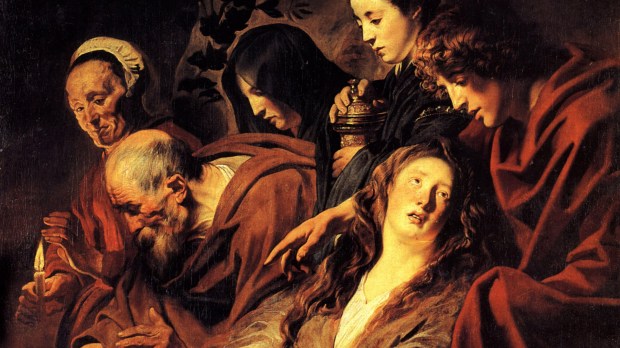In his book, The Dwelling of the Light: Praying With Icons of Christ, RowanWilliams (the former archbishop of Canterbury) reflected:
Orthodox theologians have said — surely rightly — that the moment of resurrection could not be depicted, any more than you could depict the moment of creation or the moment of incarnation. You cannot paint a picture of the simple act of God. … You can only show the effect of God’s action: the creation itself carrying the mystery of God in its very being, the human situation transformed by God. So you can depict the Risen Christ but not the event of the resurrection … So the classical Easter icon shows something more than an historical event: it shows, you might say, the effect of God’s action on human history up to that point, and implicitly, the effect of God’s action on all history … this icon shows Jesus bringing Adam and Eve out of the realm of death into the same light-filled presence.
Our ability to communicate the truth — especially God’s truth, beauty and goodness — is finite. These limitations of human language, art and ritual were not news to the early Church. Because of this their Easter experience was not enshrined with abstract philosophical concepts and fine language (that would all come with later generations of theologians and poets). And so instead of just passively remembering Christ and the mysteries of his life, they experienced him: the Risen One was not the subject of some myth or beautiful story, he was a living, redeeming, actual presence among them.
Those first Christians proclaimed (sometimes at their own peril): “Christ lives in me!” Like the icon writers who understood that God’s action transcends the limits of human intellect and artistry, those early generations of believers understood that the only way to truly celebrate the mystery of Easter was to live Christ.
Although the Gospel accounts of that first Easter morning might lead us to believe otherwise, nothing in Sacred Scripture tells us that Jesus’ resurrection was anything other than a hidden event. As Henri Nouwen observed in The Road to Daybreak, there was nothing in the resurrection that would force people to believe:
Rather, it was an event for the friends of Jesus, for those who had known him, listened to him and believed in him. It was a very intimate event: a word here, a gesture there and a gradual awareness that something new was being born — small, hardly noticed but with the potential to change the face of the earth. Mary Magdalene heard her name. John and Peter saw the empty grave. Jesus’ friends felt their hearts burn in encounters that find expression in the remarkable words, ‘He is risen.’ All had remained the same, while all had changed.
With all this in mind it isn’t by chance that the Church has chosen to read the Acts of the Apostles during the Easter Season. Luke’s chronicle of the work of the apostles in Jerusalem, of the death of Stephen and of the missionary efforts of Paul, Barnabas and Silas is an extended account of what that changed world was like and of how the faith, hope and love of those believing men and women began to spread like a fire, taking light into the darkest places of the human experience, just like the light of Jesus’ love had illuminated the dark places of their own hearts and minds. They didn’t have everything figured out, and theirs was an imperfect, all-too-human faith, but their Easter experience empowered them (speaking in the person of Peter) to proclaim
You who are children of Israel, hear these words. Jesus the Nazorean was a man commended to you by God with mighty deeds, wonders and signs, which God worked through him in your midst, as you yourselves know. This man, delivered up by the set plan and foreknowledge of God, you killed using lawless men to crucify him. But God raised him up, releasing him from the throes of death, because it was impossible for him to be held by it. (Acts 2:22-24 from the First Reading of Easter Monday)
Where does all this leave us?
Have we lost the wonder and awe of our spiritual ancestors because we know the story too well?
Has dynamic faith been replaced with dull discipleship?
We have been re-created for love, for joy, for zeal and for gratitude, “gladly enduring anything, however hard, in order to be free of death and of this life in the midst of death.” We have been granted the freedom to be truly alive. Those icons of the resurrection, showing the risen Jesus taking Adam and Eve by the hand to lead them from the place of the dead, is a pale representation of what each of us has experienced.
Like the first Christians, we have to unpack that experience, discerning grace and life in the many little miracles of our day-to-day lives. Just as it was for Peter and Mary and John, living Easter is not about being a little better than we’ve been in the past. Easter-life means the freedom and life restored to us by Jesus shines through and that something of God and of heaven — something holy — is growing within us.
Seek. Hope. Pray. Love. And above all else, live.

